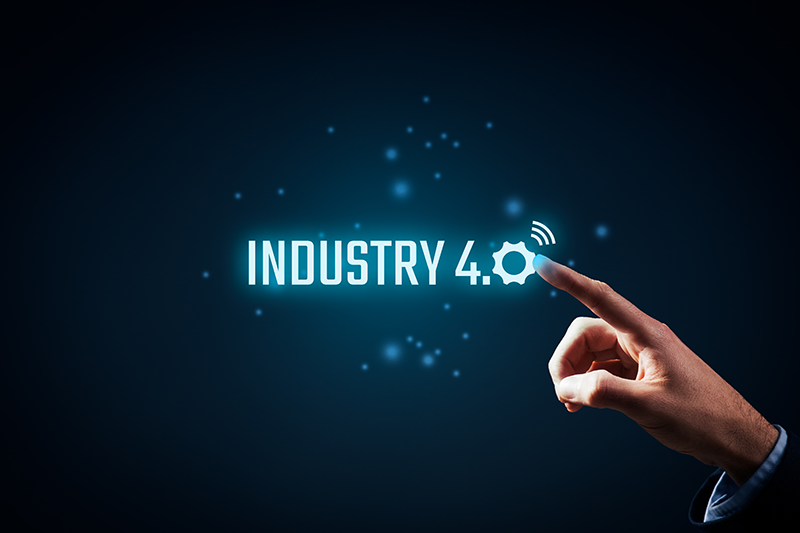Manufacturers in the age of Industry 4.0 must be smart, connected, responsive and customer centric. The factory of the future must operate flawlessly, delivering products on time with acceptable quality and a minimum of scrap and rework. In addition, manufacturing must offer increasingly customized products, low prices and faster deliveries. It’s a tall order, which is why Industry 4.0 requires advanced software and technology. If you’ve read our prior blogs on Industry 4.0, you already understand how we see the technology evolving, additionally below, we are covering how a few new technologies will profoundly change manufacturing.
Digital Twinning
Digital twinning is an important part of Industry 4.0. The digital twin is a software “image” of the physical process that enables a company to test and measure every aspect of a product and process even before the product becomes a reality, and throughout its entire lifecycle as it makes changes and revises the product and process.
Imagine eliminating the lengthy prototyping phase. With digital twinning, engineers can design a product and watch customers interact with it in 3-D virtual reality. They can see design flaws before there is anything physical to touch, and incorporate customer feedback and suggestions in the software so the product hits the market faster, and with a proven feature set.
It’s also possible to test out the production process in advance, using the digital twin. You can review the production “activities” (which are documented in the ERP routing and/or are outside steps) to determine if there’s a better way to complete the process, or to eliminate unnecessary steps and identify activities that are error prone. That might include, the need for change set-up procedures, to mold/tooling configurations, unnecessary “end-of-line” labeling activity becomes apparent during the observation of the digital twin.
The digital twin also helps to identify process parameters, SPC tolerances and critical limit points for IoT sensors. All this “activity” information can be captured in a MES system as part of building the digital twin process.
Immersive Human/Machine Interaction
We’ve all heard about the advances in robotics, but using robots effectively once took hours or days of programming to ensure accurate processing. Today, robots can be controlled through a variety of other methods, including “watching” humans perform tasks in the real world. Using AI and sensors, machines learn from humans as they perform a process, and then replicate that process endlessly and accurately.
Difficult or dangerous activities can be performed by robots controlled remotely by a human, or the activity can be performed jointly by a human/robot team. Rather than a simple robot, such “cobot” processes will enable rapid production and consistent quality.
Supply Mesh Replaces the Supply Chain
For years, supply chain professionals have known that a modern supply chain is more like a mesh or network of interlocking dependencies. Older supply chains are very inward focused, answering the question “What must be done to keep people working and production running?”
The modern value network is much more outwardly focused, answering the question “What must be done to satisfy our customer?” This may require continually shifting priorities not just on a single production floor but on the production floor of every supplier in the mesh.
While the supply chain still concerns itself with ensuring that material moves as required, the more modern focus is on supply chain resiliency. The supply mesh must have redundancies and contingencies in place that enable the entire cohort to shift quickly, cohesively and cost effectively.
Consider the recent explosion at the plant of a key supplier in the automotive industry. Pundits predicted it would be months before Ford could deliver its popular F-150 truck, but operations were back up and running in about a week. That’s a tribute to Ford’s attention to ensuring supply chain resiliency.
No supply chain can be resilient if the production operations at its members aren’t flexible and adaptable. Flexibility and adaptability require an MES and possibly an APS to ensure that new plans and schedules are feasible and meet the customer requirements. There’s no time to wait overnight—or even a few hours—to see if a new schedule is feasible according to the ERP system. Supply chain resiliency requires the speed and flexibility inherent in these newer factory activity focused systems.
Customer-Centric Factories
Customers are demanding more and more customized products and services, and they don’t want to wait for delivery or pay extra to get what they want. As we discussed in the previous section, the modern supply mesh is focused on the customer.
That means that factories like yours must become more flexible than ever, operating effectively in lot sizes of one, and perhaps even changing priorities of the product in mid-production as the customer’s needs change.
Knowing precisely when to quote delivery dates through Capable-to-Promise technology or to quickly change the priorities of orders on the factory floor is a job for MES software, because the MES system knows the exact state of everything on the production floor.
These changes are just the beginning. As Industry 4.0 technologies continue to mature, the profound changes to manufacturing and the need for an MES as a foundation become more and more important.
